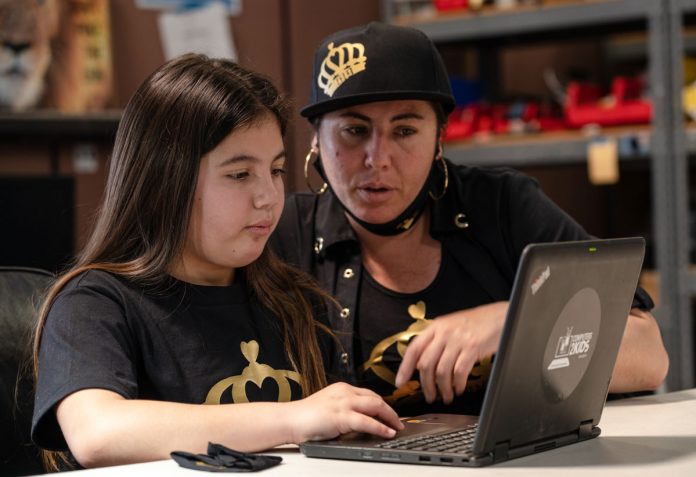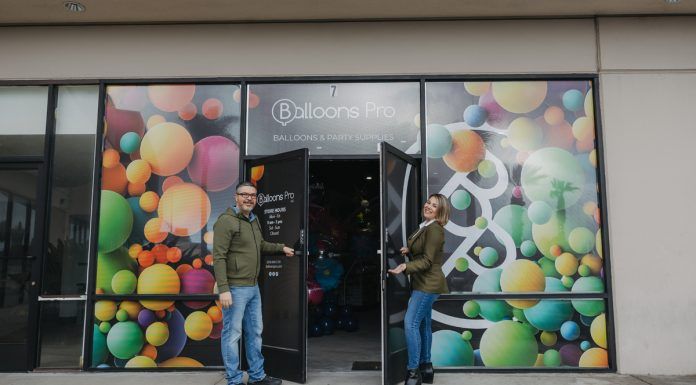
According to the Bureau of Labor Statistics, American adults between the ages of 35 and 54 are most likely to volunteer in their community, yet HandsOn San Diego has created a category of opportunities available to a completely different demographic: volunteers under the age of 18.
HandsOn Volunteer Engagement Coordinator Jessie Case explains youth volunteers sometimes encounter obstacles because of the age restrictions some organizations have in place for safety or liability reasons, but says HandsOn is committed to making volunteering easier for everyone, especially during the COVID-19 pandemic.
“During this pandemic, we’ve seen youth step up and answer the call to help their communities by distributing and delivering food, making cards for isolated seniors, and more. We hope that the projects we list on the San Diego COVID-19 volunteer hub will continue to inspire youth and adults alike to get involved,” Case said.
One group that regularly includes younger volunteers is Computers 2 Kids, a non-profit founded in 2004 specifically to bridge the digital divide.
Chief Executive Officer Cheri Pierre said the whole premise is to take retired electronics, refurbish them, and then partner with schools and other non-profits that do not have access to technology at home.
They have partnered with schools across San Diego as well as the South County Economic Development Council.
“We are STEM (science, technology, engineering and math) based, we deal with low-income families, we’re also environmentally conscious because we’re extending the life of electronics by two to five years and we’re a workforce development group,” Pierre said.
Pierre credits Volunteer Coordinator Twyla Perry with finding ways to include children and teen volunteers.
“We had some very young kids, like five-year olds come through who were eager to help because they had been told to give back. Twyla created an event where the kids cleaned and wiped down the power connectors. It was a perfect activity and allowed us to really focus on those youngest kids,” Pierre said.
They now have regular groups of children, teens, and persons with special needs regularly volunteer at the facility.
“ ‘No’ should never be the first answer to fall back on and for so many people, that’s the first response they get. We give packets to our families in multiple languages so even just having kids staple those packets is a volunteer task where they can help out,” Pierre said.
She says it is just a matter of getting creative when coming up with tasks that will engage younger volunteers that also benefit the non-profit.
“For a 16 or 17 year-old to be able to come in and just start working on computers is helpful and appropriate. One thing we do require, if there is someone young in there, an adult or longtime volunteer is also there keeping an eye to make sure they’re safe and that they have someone to walk them through the process of whatever they’re working on,” Pierre said.
She says they approach each situation as an employer-employee relationship.
“Teens sign in, they’re taught to be respectful, no bullying… We really take this opportunity for the younger students to teach them how to behave in the workforce,” Pierre said.
“A lot of organizations are struggling right now with sheltering in place. We’ve been open this entire time as a service agency. I encourage everyone: please don’t be afraid to go back. There are over 11,000 nonprofits in San Diego county and collaboration is key for us. We’re just one part of that. By working together, we all see better results.”
The nonprofit has had to adjust their processes through the COVID pandemic by changing to a drive-through situation, said Pierre. She draws attention to how the increased demand for computers in the immediate weeks after school closures highlighted how many college-age students rely entirely on school computers.
“It’s sad that it took something like this to spotlight the digital disparity and I feel like this is an opportunity for the entire state of California to really make a difference and eradicate a problem that is very real,” Pierre said.














